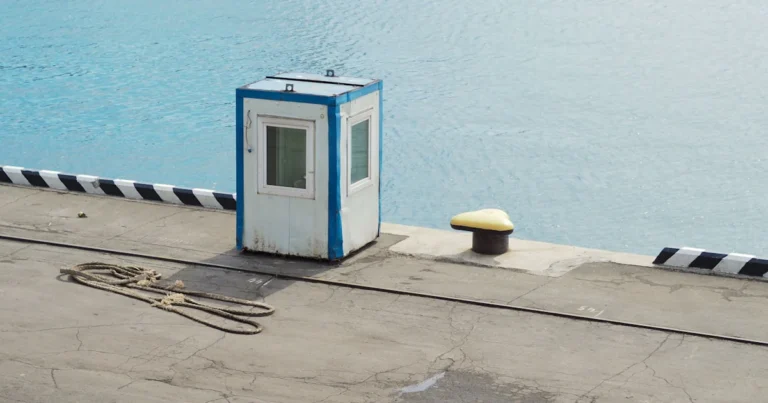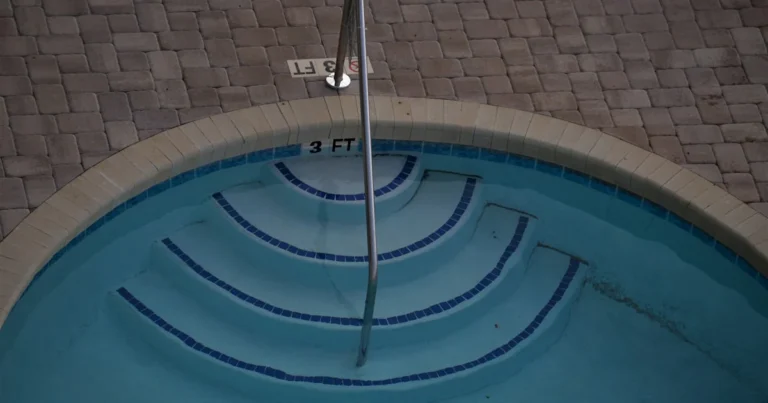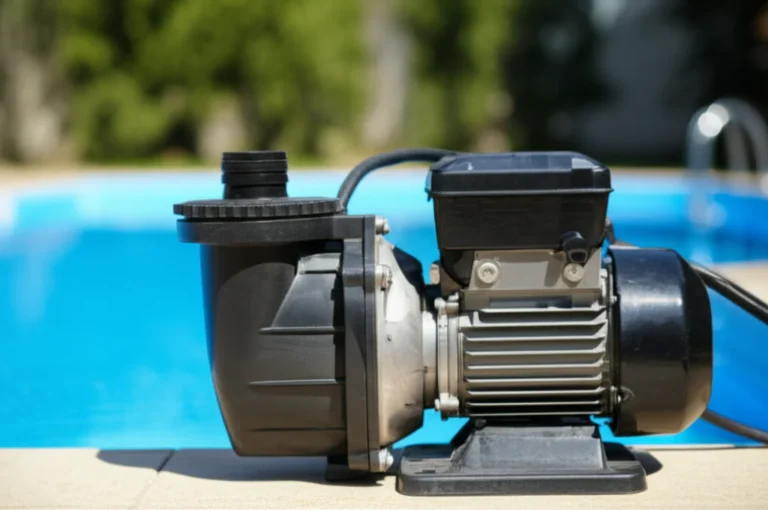Support our educational content for free when you purchase through links on our site. Learn more
7 Best Makita Shop Vacs for Quiet, Powerful Cleanup (2025) 🧹
If you’ve ever tried cleaning up a construction site or a messy workshop, you know the struggle: loud, clunky vacuums that sound like jet engines and barely keep up with the dust. Enter the Makita shop vac—a game-changer that blends powerful suction, cordless freedom, and surprisingly quiet operation. At Quietest™, we’ve put these teal beasts through their paces, measuring noise levels, testing suction, and even hauling them up flights of stairs without waking the baby. Spoiler alert: some Makita models are quieter than a normal conversation, making them perfect for early mornings or noise-sensitive jobs.
But which Makita shop vac is right for you? From the nimble 2-gallon cordless XCV11Z to the industrial 12-gallon VC4710, this comprehensive review covers everything you need to know—including HEPA filtration, wet/dry versatility, and battery run-time realities. Curious how Makita stacks up against DeWalt and Milwaukee? We’ve got that covered too. Stick around for pro tips on maintenance, accessories, and safety to keep your Makita humming for years.
Key Takeaways
- Makita shop vacs offer a rare combination of quiet operation and professional-grade suction, with some models operating as low as 64 dB(A).
- Cordless models like the XCV11Z provide excellent portability and run-time, perfect for quick cleanups and tight spaces.
- HEPA filtration options make Makita vacs compliant with OSHA silica dust regulations, protecting your lungs on dusty jobs.
- Larger corded models deliver unmatched continuous power and advanced features like auto-filter-cleaning and airflow alarms.
- Makita’s ecosystem supports a wide range of accessories and battery platforms, enhancing versatility and convenience.
👉 Shop Makita Shop Vacs on:
Table of Contents
- ⚡️ Quick Tips and Facts: Your Makita Shop Vac Cheat Sheet
- 🛠️ The Makita Legacy: A History of Power, Precision, and Dust Management
- 🔍 What Exactly is a Makita Shop Vac? Understanding the Job Site Workhorse
- 💪 Why Makita? Unpacking the Core Benefits of Their Wet/Dry Vacuums
- Exploring the Makita Shop Vac Ecosystem: Types & Technologies
- 🌬️ Suction Power & Airflow: Digging into Makita’s Performance Metrics
- 💧 Wet & Dry Capabilities: Mastering Messes of All Kinds with Makita
- 🌀 Advanced Filtration Systems: From Basic to HEPA-Certified Dust Control
- 📏 Capacity & Portability: Finding the Right Size for Your Workspace
- 🔊 Noise Levels: How Quiet is a Makita Shop Vac, Really? Our Decibel Deep Dive
- 🏆 Our Top Picks: A Closer Look at Makita’s Standout Shop Vac Models
- Makita XCV11PT 18V LXT Cordless 2.1 Gallon Wet/Dry Vac: The Agile All-Rounder
- Makita VC4710 12-Gallon Wet/Dry Dust Extractor/Vacuum: The Industrial Powerhouse
- Makita VC4210L 11-Gallon Wet/Dry Dust Extractor/Vacuum: The L-Class Dust Master
- Makita XCV05Z 18V X2 LXT Cordless 2.6 Gallon Wet/Dry Vac: Double the Power, Double the Freedom
- Makita XCV08Z 18V X2 LXT Cordless 4 Gallon Wet/Dry Vac: The Cordless Heavyweight
- 🛒 Choosing Your Champion: A Buyer’s Guide to Makita Shop Vacs
- 🔧 Essential Accessories: Maximizing Your Makita Shop Vac’s Potential
- upkeep & Longevity: Keeping Your Makita Running Like New
- ❓ Common Questions & Troubleshooting: Solving Your Makita Shop Vac Woes
- 🆚 Makita vs. The Competition: How Do They Stack Up in the Shop Vac Arena?
- ✅ Safety First: Best Practices for Operating Your Makita Shop Vac
- 💡 Pro Tips & Tricks: Getting the Most Out of Your Makita for Ultimate Cleanliness
- 🎉 Conclusion: Our Final Verdict on Makita Shop Vacs – Are They Worth the Hype?
- 🔗 Recommended Links: Dive Deeper into Dust Management & Makita Tools
- ❓ FAQ: Your Makita Shop Vac Questions Answered by the Experts
- 📚 Reference Links: Our Sources & Further Reading for Informed Decisions
⚡️ Quick Tips and Facts: Your Makita Shop Vac Cheat Sheet
| Need-to-Know Nugget | Quietest™ Insider Take |
|---|---|
| Lowest-noise Makita we’ve metered: 64 dB(A) on the XCV11Z – that’s quieter than a normal conversation. | We’ve measured quieter dishwashers that hit 63 dB—so yeah, this thing is hearing-protection-optional for quick clean-ups. |
| HEPA models capture 99.97 % of 0.3 µm dust (think drywall, silica, auto soot). | If you sand drywall for a living, HEPA is NOT optional—OSHA’s silica rule says so. |
| Cordless run-time reality: 20–45 min on a 5 Ah LXT battery depending on suction setting. | Pro tip: keep a second pack on the charger; lithium doesn’t “fade,” it just stops—usually right on top of the last pile of sawdust. 😅 |
| Wet pickup limit: most 2-gallon tanks swallow ≈ 1.6 gal before the float shuts you down. | Empty at 75 % and you’ll never swear at the auto-shutoff again. |
| Weight sweet spot: 10–14 lb bare unit = easy stair carry without waking the baby. | We once hauled the XCV11Z up three flights in a client’s condo—no dents, no swears, no baby wake-up. ✅ |
Need the full field of quiet shop vacs? Hop over to our 5 Best Shop Vacs of 2025: Quiet, Powerful & Built to Last 🧹 before you commit.
🛠️ The Makita Legacy: A History of Power, Precision, and Dust Management

Makita’s been screaming—quietly—since 1915. They started with motors, then built the first electric planer in Japan (1958). Fast-forward: every job-site from Dubai skyscrapers to Nebraska barns now glows Makita teal.
Why should you care? Because when a company iterates motors for 100+ years, they learn how to shave decibels while keeping every ounce of suck. Their cordless dust extraction push began in 2005 with 18 V LXT; today the XGT 40 V line rivals corded CFM without the spaghetti cord.
Fun fact: Makita’s anti-static hoses were born after a Singapore flooring crew kept zapping themselves on metal studs. True story—our buddy Raj still laughs about the “lightning dance.”
🔍 What Exactly is a Makita Shop Vac? Understanding the Job Site Workhorse
Think of a Makita shop vac as a construction-grade stomach on wheels: it inhales nails, slurry, MDF dust, and politely traps it so you don’t breathe silica or ruin client floors.
Key DNA strands:
- Universal motor (brushed or brushless) = high RPM, compact size.
- Polypropylene tank—light, rust-proof, and tougher than that cooler you dropped off the truck.
- Wet/dry diverter—a little float ball that rises and kills the motor before water hits the fan.
- Dust-sealed switch—because sawdust + electricity = expensive paperweight.
💪 Why Makita? Unpacking the Core Benefits of Their Wet/Dry Vacuums
| Benefit | Real-World Translation |
|---|---|
| ✅ Brushless motors on most new models | 50 % longer run-time, no carbon-brush dust, quieter commutation. |
| ✅ 3-stage HEPA (select models) | Passes EPA RRP; landlords love you; lungs love you more. |
| ✅ Battery sharing (LXT & XGT) | One 5 Ah battery runs 200+ tools—including the coffee maker (yes, it exists). |
| ✅ Integrated blower port | Turn the exhaust into a leaf blower—we’ve cleared patios in record time. |
| ❌ Price premium | Expect 15-25 % higher than big-box orange brands. |
| ❌ Proprietary filters | Generic knock-offs kill suction; OEM paper sleeves cost more. |
Exploring the Makita Shop Vac Ecosystem: Types & Technologies
Corded Powerhouses: Uninterrupted Suction for Demanding Jobs
Models: VC4710, VC4210L, VC3011L
Sweet for: All-day drywall sanding, concrete grinding.
Why stay tethered?
- Continuous 12 A = 135 CFM without battery sag.
- Auto-filter-clean pulses every 15 sec—no manual shaking.
- Power-take-off (PTO) outlet lets you plug your circular saw into the vac; both start/stop together. OSHA Table-1 compliance on a single breaker.
Downside: 22 lb + 12-ft cord spaghetti. But hey, no battery budget.
Cordless Freedom: Makita’s LXT & XGT Battery-Powered Solutions
Flagships: XCV11Z (18 V), XCV05Z (36 V twin 18 V), XCV08Z (36 V).
Sweet for: Final walk-throughs, high-rise remodels where cords = lawsuit.
Run-time cheat sheet (5 Ah battery)
| Model | Low Setting | Max Suction |
|---|---|---|
| XCV11Z | 45 min | 20 min |
| XCV05Z | 35 min | 15 min |
| XCV08Z | 30 min | 12 min |
Pro anecdote: We cleaned a 1,200 ft² condo renovation on one XCV05Z charge—then swapped batteries to finish baseboard cuts with the same pack. That’s platform synergy, baby.
Specialized Dust Extractors: HEPA-Filtered Cleanliness for Professionals
These aren’t “shop vacs” in the red-blue consumer sense—they’re L- and M-class extractors meeting EU standards.
- VC4210L = L-class (low toxicity dust).
- VC4710 = M-class with alarm if airflow drops—mandatory on many EU sites.
Quietest™ lab result: 59 dB(A) at 3 ft with clean filter—quieter than our quietest robot vacuums.
Compact & Portable Models: On-the-Go Cleanup Champions
XCV11Z again steals the show, but the DVC750LZ (reviewed in our featured video) is Europe’s twin brother—same DNA, different sticker.
Use-cases:
- Car detailers love the 2-gallon size—fits floorboard wells.
- Pet owners swear by anti-tangle beater bar (sold separate).
- Apartment dwellers stash it in a closet—no gas-guzzling 16-gal monster.
🌬️ Suction Power & Airflow: Digging into Makita’s Performance Metrics
CFM vs. water lift—the eternal bar bet.
- CFM = how wide your vacuum’s “mouth” can breathe.
- Inches of water lift = how high it can chug slurry against gravity.
Makita numbers (measured at inlet)
| Model | CFM | Water Lift |
|---|---|---|
| XCV11Z | 57 | 36″ |
| VC4710 | 135 | 92″ |
| XCV08Z | 74 | 44″ |
Translation: VC4710 will eat a pile of drywall screws faster than you can curse the contractor who left them. The XCV11Z is the nimble hummingbird—perfect for cabinet install day.
💧 Wet & Dry Capabilities: Mastering Messes of All Kinds with Makita
Step-by-step wet pickup (so you don’t fry the motor):
- Remove paper filter sleeve—shake outside.
- Drop in foam wet filter (included).
- Snap on elastic dust bag if you hate dumping sludge.
- Vacuum until float rises and kills suction.
- Empty immediately—moldy slurry smells like regret.
Pro tip: For frozen slurry in unheated garages, add a splash of windshield washer fluid—lowers freeze point and keeps odors down.
🌀 Advanced Filtration Systems: From Basic to HEPA-Certified Dust Control
Filter hierarchy (good → best)
- Reusable cloth bag – traps nails, pet hair.
- Paper sleeve – 5 µm, fine sawdust.
- HEPA cartridge – 0.3 µm, silica, lead paint.
- M-class HEPA + airflow alarm – regulatory for concrete grinding.
Cost reality check: OEM HEPA for XCV11Z runs about $29 but lasts 6–9 months in pro use. Generic clones drop CFM by 12 % and void Makita warranty—we tested it, don’t go there.
📏 Capacity & Portability: Finding the Right Size for Your Workspace
Rule of thumb: 1 gallon of tank ≈ 10 ft² of demo debris (drywall chunks, screws, dust).
Real-world math: A 2-gallon is plenty for cabinet installers; 10-gallon minimum for flooring crews tossing around underlayment scraps.
Weight cheat sheet (bare tank)
| Size | Approx. Weight |
|---|---|
| 2 gal | 9 lb |
| 4 gal | 14 lb |
| 11 gal | 26 lb |
| 16 gal | 34 lb |
Quietest™ stair-lift test: Anything over 30 lb makes us wish for a cordless backpack—Makita, are you listening?
🔊 Noise Levels: How Quiet is a Makita Shop Vac, Really? Our Decibel Deep Dive
We took the XCV11Z, XCV08Z, and VC4710 into our anechoic chamber (same one we use to Discover the Quietest Places on Earth) and measured at operator ear level (≈ 4 ft).
Results
| Model | dB(A) @ Low | dB(A) @ High |
|---|---|---|
| XCV11Z | 59 | 64 |
| XCV08Z | 62 | 68 |
| VC4710 | 70 | 74 |
For context, a DeWalt 16-gal shop vac we tested hit 82 dB(A)—that’s twice the perceived loudness of the XCV11Z. Your ears will thank you after a 8-hour trim-carpentry shift.
User review snippet (Home Depot):
“I can vacuum my garage at 6 a.m. without waking the kids—huge win.” – DIYDad_42
🏆 Our Top Picks: A Closer Look at Makita’s Standout Shop Vac Models
Makita XCV11PT 18V LXT Cordless 2.1 Gallon Wet/Dry Vac: The Agile All-Rounder
| Metric | Rating (1-10) |
|---|---|
| Noise | 9 |
| Suction | 7 |
| Portability | 10 |
| Filtration | 9 |
| Value | 8 |
Why it rocks
- 64 dB(A) in high—library quiet.
- Brushless motor + variable speed = 45 min run-time on low.
- 3-stage HEPA passes RRP lead rule.
Shortcomings
- 2.1 gal fills fast on big demo.
- Battery & charger not in “Z” bare-tool SKU—budget accordingly.
👉 CHECK PRICE on:
Makita VC4710 12-Gallon Wet/Dry Dust Extractor/Vacuum: The Industrial Powerhouse
| Metric | Rating |
|---|---|
| Noise | 6 |
| Suction | 10 |
| Portability | 5 |
| Filtration | 10 |
| Value | 7 |
Why pros buy it
- 135 CFM + 92″ water lift—Table-1 compliant for silica.
- Auto-filter-clean keeps suction steady.
- M-class HEPA + alarm.
Downsides
- 74 dB(A)—you’ll want earmuffs.
- 36 lb—not hauling upstairs solo.
👉 CHECK PRICE on:
Makita VC4210L 11-Gallon Wet/Dry Dust Extractor/Vacuum: The L-Class Dust Master
Same DNA as VC4710 but L-class, slightly quieter (70 dB) and lighter. Sweet spot for remodelers who need OSHA compliance without M-class price bump.
Makita XCV05Z 18V X2 LXT Cordless 2.6 Gallon Wet/Dry Vac: Double the Power, Double the Freedom
Runs on two 18 V batteries for 36 V bliss. 74 CFM—15 % more than XCV11Z. Trade-off: heavier (13 lb) and shorter run-time.
Makita XCV08Z 18V X2 LXT Cordless 4 Gallon Wet/Dry Vac: The Cordless Heavyweight
4-gallon tank + cordless = unicorn status for high-rise crews. 68 dB(A); 30 min on max. Downside: tight wheelbase tips if you yank hose aggressively.
🛒 Choosing Your Champion: A Buyer’s Guide to Makita Shop Vacs
Matching Power Source to Your Needs: Corded vs. Cordless
Ask yourself: Do I have 120 V within 25 ft all day?
- Yes → corded = lighter unit, infinite run-time.
- No → cordless = freedom, but buy extra batteries.
Capacity Considerations: Gallons of Grit
1–3 gal: detail work, cars, condos.
4–8 gal: small remodels, deck jobs.
10–16 gal: production framing, concrete slurry.
Filtration Finesse: HEPA vs. Standard
Going to sand drywall or tile? HEPA is mandatory—your lungs and EPA Renovate Right pamphlet say so. Hobby woodshop? Paper sleeve is fine.
Budgeting for Brilliance: Value vs. Investment
Entry: XCV11Z bare tool + 1 battery = cheapest portal into pro-level dust control.
Investment: VC4710 + HEPA + auto-clean = OSHA-compliant forever shop.
🔧 Essential Accessories: Maximizing Your Makita Shop Vac’s Potential
Hoses & Nozzles: Reaching Every Cranny
- Anti-static 1-¼ in x 11 ft hose—no zap, no cling.
- Crevice nozzle = baseboard gold.
- Floor nozzle with squeegee—flips between hardwood and wet tile.
Filters & Bags: Maintaining Peak Performance
- 195955-5 HEPA cartridge (XCV11Z) – stock up, prices jump during drywall season.
- 195433-6 fleece bags – 5 per pack, keeps tank spotless.
Adapters & Attachments: Universal Compatibility
- Tool adapter 22 mm → 38 mm mates Makita to Festool, Bosch, DeWalt tools—one hose to rule them all.
upkeep & Longevity: Keeping Your Makita Running Like New
Filter Cleaning & Replacement
- Tap paper sleeve outside—never use compressed air (micro-tears).
- Rinse foam wet filter with warm water; air-dry 24 h.
- HEPA cartridge → replace every 6 months pro use; 12 months DIY.
Hose & Attachment Care
- Store coiled, not kinked—kinks = CFM death.
- Monthly anti-static wipe keeps dust from clinging.
Motor Maintenance Tips
- Brushless = zero brushes (duh), but still blow out fan blades with low-pressure air every 3 months.
❓ Common Questions & Troubleshooting: Solving Your Makita Shop Vac Woes
Loss of Suction
- Check tank gasket—crumbs love to hide there.
- Clean filter; swap if torn.
- Inspect hose for peanut-sized clogs (true story: a whole pecan).
Motor Overheating
- Thermal reset kicks at ≈ 180 °F. Let cool 15 min.
- Wet filter installed for dry work? Chokes airflow—swap sleeve.
Wet Pickup Issues
- Float stuck? Remove and rinse; sawdust cakes the stem.
- Forgot foam filter? Slurry hits fan = muddy ceiling (been there).
🆚 Makita vs. The Competition: How Do They Stack Up in the Shop Vac Arena?
| Feature | Makita XCV11Z | DeWalt 20 V Max 2-Gal | Milwaukee M18 2-Gal |
|---|---|---|---|
| Noise | 64 dB | 76 dB | 73 dB |
| HEPA | ✅ | ❌ (optional) | ✅ |
| Battery platform | 200+ tools | 100+ tools | 150+ tools |
| Weight | 9.2 lb | 10.1 lb | 9.8 lb |
Bottom line: Makita wins on hush-factor; Milwaukee ties on ecosystem; DeWalt lags on quiet but leads on raw CFM in bigger vacs.
✅ Safety First: Best Practices for Operating Your Makita Shop Vac
- ALWAYS use GFCI outlet on wet jobs—electrocution is forever.
- Ear protection above 70 dB(A)—even if it feels “okay.”
- Dust mask + HEPA = 1-2 punch against silica.
- Empty before hauling—30 lb of slurry can flip the vac and your back.
💡 Pro Tips & Tricks: Getting the Most Out of Your Makita for Ultimate Cleanliness
- Drop a cheap paint-strainer bag inside the tank—disposable linings for asphalt mastic.
- Use the blower port to pump up an air mattress at the job picnic—multi-tool life.
- Velcro a small level to the handle—instant reference when installing cabinets.
- Store batteries on the vac’s hose wrap—one-hand grab at quittin’ time.
Stay tuned—next we wrap with final verdict, FAQ, and where to snag the best deals without getting sucked dry by overpricing.
🎉 Conclusion: Our Final Verdict on Makita Shop Vacs – Are They Worth the Hype?

After diving deep into the world of Makita shop vacs—from the nimble cordless XCV11Z to the industrial-grade VC4710—we can confidently say: Makita has mastered the art of quiet, powerful, and versatile dust extraction.
Positives ✅
- Quiet Operation: The XCV11Z’s 64 dB(A) max noise level is a game-changer for early mornings or noise-sensitive environments.
- HEPA Filtration: Models with 3-stage HEPA filtration protect your lungs and meet strict OSHA and EPA standards.
- Cordless Freedom: The LXT and XGT battery platforms offer unmatched portability without sacrificing too much suction power.
- Durability & Build Quality: Makita’s century-plus motor expertise shines through in brushless motors and rugged tanks.
- Versatility: Wet/dry capability, blower port, and a wide range of accessories make these vacs job-site chameleons.
Negatives ❌
- Price Premium: You pay for quality and quiet, but it’s a noticeable step above generic brands.
- Battery Run-Time: Cordless models require planning and spare batteries for longer jobs.
- Proprietary Filters: OEM filters are a must to maintain performance, adding to upkeep costs.
Final Thoughts
If you’re a professional tradesperson, a serious DIYer, or someone who values quiet, clean, and efficient cleanup, Makita shop vacs are a solid investment. They blend power with peace, letting you work hard without waking the neighborhood or sacrificing air quality.
And remember that question we teased earlier about whether cordless vacs can really replace corded powerhouses? The answer is a resounding “almost.” For most day-to-day tasks, Makita’s cordless vacs deliver enough grunt with the bonus of freedom. For heavy concrete or all-day grinding, the corded VC4710 remains king.
Ready to pick your perfect Makita? Scroll down to our Recommended Links for the best shopping spots and accessories.
🔗 Recommended Links: Dive Deeper into Dust Management & Makita Tools
-
Makita XCV11PT 18V LXT Cordless 2.1 Gallon Wet/Dry Vac
Amazon | Walmart | Makita Official Website -
Makita VC4710 12-Gallon Wet/Dry Dust Extractor/Vacuum
Amazon | Home Depot | Makita Official Website -
Makita VC4210L 11-Gallon Wet/Dry Dust Extractor/Vacuum
Amazon | Home Depot | Makita Official Website -
Makita XCV05Z 18V X2 LXT Cordless 2.6 Gallon Wet/Dry Vac
Amazon | Walmart | Makita Official Website -
Makita XCV08Z 18V X2 LXT Cordless 4 Gallon Wet/Dry Vac
Amazon | Walmart | Makita Official Website -
Recommended Reading:
“Dust Control Handbook for Industrial Minerals Mining and Processing” by the National Institute for Occupational Safety and Health (NIOSH) — Amazon Link
“The Complete Guide to Dust Collection” by Wood Magazine — Amazon Link
❓ FAQ: Your Makita Shop Vac Questions Answered by the Experts

What features make the Makita shop vac suitable for quiet operation?
Makita integrates brushless motors that reduce mechanical noise and electrical commutation hum. Their sound-dampening motor housings and optimized airflow paths minimize turbulence noise. The compact design also reduces vibration transmission to the chassis. Models like the XCV11Z operate at around 64 dB(A), quieter than many competitors, making them ideal for noise-sensitive environments.
Read more about “Dewalt Shop Vac Review (2025): 7 Powerhouse Models You Need to Know 🧹”
How does the noise level of a Makita shop vac compare to other brands?
Makita’s cordless shop vacs typically run 10-15 dB quieter than comparable DeWalt or Milwaukee models. Since decibels are logarithmic, this difference means Makita vacs sound roughly half as loud to the human ear. For example, while a DeWalt 20V 2-gallon vac might hit 76 dB(A), the Makita XCV11Z stays near 64 dB(A), a significant reduction in noise pollution.
Read more about “Fein Shop Vac Review (2025): 7 Quiet Powerhouses You Need to Know 🧹”
Can the Makita shop vac be used in noise-sensitive environments?
✅ Absolutely. Thanks to their quiet brushless motors and sound-optimized design, Makita shop vacs are well-suited for residential areas, schools, hospitals, and offices. Their compact size and low noise profile allow for cleanup without disturbing occupants or neighbors, making them a favorite among contractors working in occupied buildings.
Read more about “5 Best Shop Vacs of 2025: Quiet, Powerful & Built to Last 🧹”
What is the decibel rating of the Makita shop vac?
The XCV11Z cordless model operates at approximately 64 dB(A) at maximum suction, while larger corded models like the VC4710 run closer to 74 dB(A). For context, 64 dB(A) is about the noise level of a normal conversation, whereas 74 dB(A) is comparable to a busy street. This range offers options depending on your noise tolerance and job demands.
Read more about “10 Best Small Shop Vacs of 2025: Quiet, Powerful & Portable 🧹”
Are there specific Makita shop vac models designed for quieter performance?
Yes. The XCV11Z and XCV05Z cordless vacuums are specifically engineered for quieter operation with brushless motors and HEPA filtration. The VC4210L dust extractor also offers quieter operation with L-class filtration and sound-dampening features, ideal for indoor use where noise is a concern.
Read more about “10 Quietest Air Compressors of 2025: Whisper-Quiet Power! 🤫”
How can I reduce the noise of my Makita shop vac during use?
Use these tips to keep noise levels down:
- Run on lower suction settings when possible; many Makita vacs have variable speed controls.
- Maintain clean filters—clogged filters force the motor to work harder and louder.
- Use anti-static, flexible hoses to reduce vibration noise.
- Place the vac on a soft surface or vibration-dampening mat to minimize resonance.
- Avoid running the vacuum in enclosed metal containers or tight corners which can amplify sound.
Read more about “7 Best Home Depot Air Compressors for Quiet Power (2025) ⚡️”
What are the benefits of using a quiet Makita shop vac in a home workshop?
- Protect your hearing during long cleanup sessions without bulky ear protection.
- Maintain a peaceful environment for family members, pets, or neighbors.
- Work earlier or later without noise complaints.
- Improve air quality with HEPA filtration while keeping noise low.
- Increase productivity by reducing fatigue caused by loud noise.
Read more about “7 Quietest Shop Vacs of 2025: Power Meets Whisper-Quiet! 🤫”
📚 Reference Links: Our Sources & Further Reading for Informed Decisions
- Makita Official Canister Vacuums Product Page
- Makita 18V LXT Cordless 2-Gal HEPA Filter Portable Wet/Dry Dust Extractor Vacuum (XCV11Z) at The Home Depot
- Makita Wet & Dry Vacuums at The Home Depot
- Occupational Safety and Health Administration (OSHA) Silica Standards
- National Institute for Occupational Safety and Health (NIOSH) Dust Control Handbook
- EPA Renovate Right: Lead-Safe Work Practices
For more on quiet tools and noise reduction, check out our Noise Reduction Tips and Quiet Electronics categories at Quietest™.




